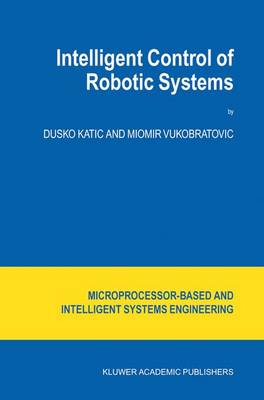Intelligent Systems, Control and Automation: Science and Engineering
2 primary works
Book 25
As robotic systems make their way into standard practice, they have opened the door to a wide spectrum of complex applications. Such applications usually demand that the robots be highly intelligent. Future robots are likely to have greater sensory capabilities, more intelligence, higher levels of manual dexter ity, and adequate mobility, compared to humans. In order to ensure high-quality control and performance in robotics, new intelligent control techniques must be developed, which are capable of coping with task complexity, multi-objective decision making, large volumes of perception data and substantial amounts of heuristic information. Hence, the pursuit of intelligent autonomous robotic systems has been a topic of much fascinating research in recent years. On the other hand, as emerging technologies, Soft Computing paradigms consisting of complementary elements of Fuzzy Logic, Neural Computing and Evolutionary Computation are viewed as the most promising methods towards intelligent robotic systems. Due to their strong learning and cognitive ability and good tolerance of uncertainty and imprecision, Soft Computing techniques have found wide application in the area of intelligent control of robotic systems.
Book 26
Dynamics of Robots with Contact Tasks
by M. Vukobratovic, V. Potkonjak, and V. Matijevic
Published 30 November 2003
As robots are becoming more and more sophisticated the interest in robot dynamics is increasing. Within this field, contact problems are among the most interesting, since contacts are present in almost any robot task and introduce serious complexity to system dynamics, strongly influencing robot behavior. The book formulates dynamic models of robot interaction with different kinds of environment, from pure geometrical constraints to complex dynamic environments. It provides a number of examples. Dynamic modeling is the primary interest of the book but control issues are treated as well. Because dynamics and contact control tasks are strongly related the authors also provide a brief description of relevant control issues.
The book will be of interest to engineers working in research and development in robotics and automation and to both graduate and postgraduate students. The work will also be valuable to readers involved in manufacturing, robotics, automation, computer and control engineering.
The book will be of interest to engineers working in research and development in robotics and automation and to both graduate and postgraduate students. The work will also be valuable to readers involved in manufacturing, robotics, automation, computer and control engineering.

